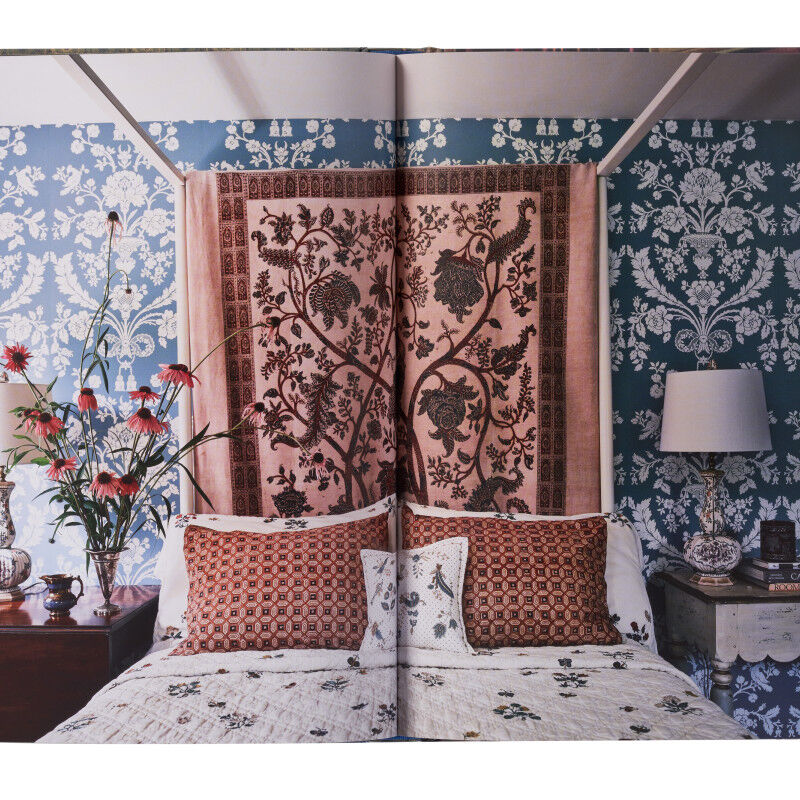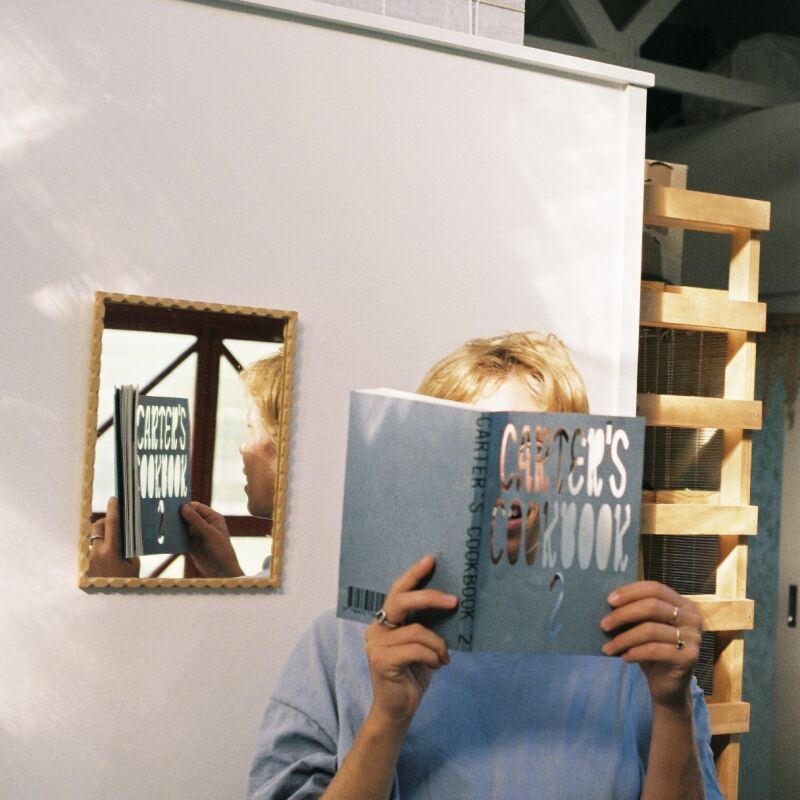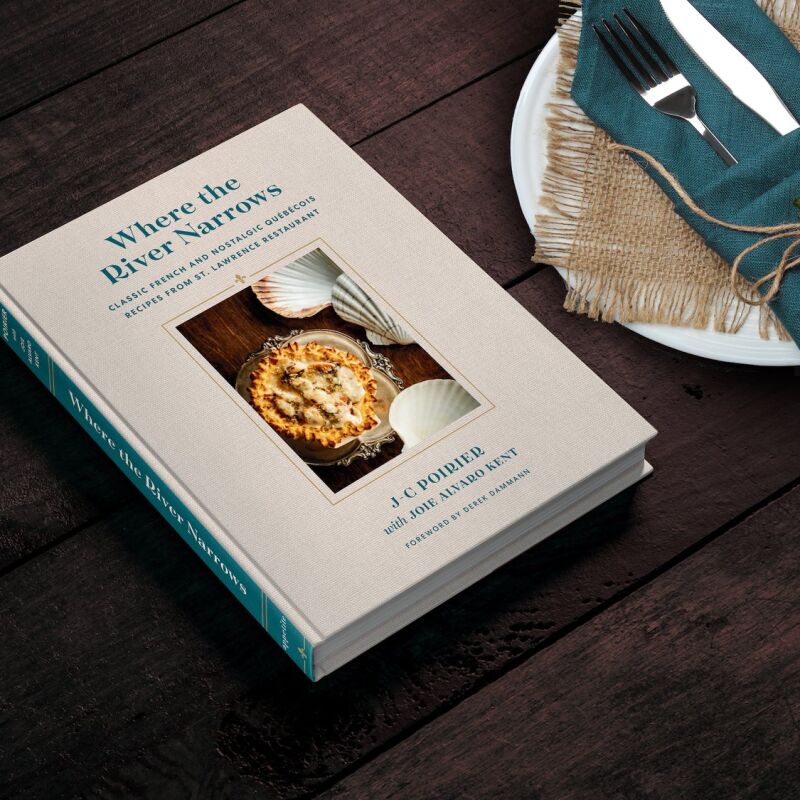New Yorkers are learning how to cook—at a former widget factory in Prospect Heights, Brooklyn, recently transformed into Cook Space Culinary Workshop. Founded by restaurateur Michelle Mannix along with chef and ceramicist Nini Nguyen and Sunday Suppers alum Lara Southern, the workshop is designed to make learning to cook approachable and interactive, at a time when obsession with food is at an all-time high but cooking nightly is rare. The design, all by Mannix, encourages interaction: open shelves and an all-purpose pegboard, hung with home and commercial kitchen tools alike, invite students to reach for what they need; in the dining area, built into the factory’s former freight elevator, participants enjoy what they’ve prepared. Overall the team wanted the space to feel like “the dream apartment of your effortlessly cool chef friend.” Mission accomplished: Here are nine ideas to channel the chic chef look at home.
Photography by Sean Santiago, except where noted.
1. The table comes first.

The most important thing in a chic chef’s apartment besides the kitchen? A table at which to enjoy and share food. “Our mission is to build culinary confidence,” Mannix says. “I wanted people to feel at ease, comfortable, inspired, and creative when they came to one of our classes.” So Mannix designed a welcoming dining area with the feel of a chic friend’s apartment, despite being built into the former factory’s freight elevator. “We also play music during class, as you might at home in your dining room, to set a celebratory mood. It sets a tone of joy and connection over food and cooking.”
The bold flooring was sourced from a tile shop in the Chelsea district of Manhattan.
2. Mix Ikea with ABC.

When it comes to tableware, Mannix sources like a chef might: “Most of the plates and bowls come from Ikea. The platters are a mix of vintage, from yard sales to ABC Kitchen & Home. The glassware is a mix of Ikea and vintage.” Source utilitarian everyday pieces, like glassware and plates, from Ikea; intersperse with a statement piece or two, like the vintage silver at lower left.
3. Plan for expandable dinner parties.

Whether chef or host, always be prepared for just-dropping-in dinner guests. At Cook Space, a custom dining table by Brooklyn-based Stewart Hoyt is made to expand, depending on the size of the class (and despite the tight quarters). “It’s based on a vintage pine table we were using early on that we got at Beall & Bell in Greenport, NY,” Mannix says. “When we realized we needed more room for private dinners, we had the table replicated with one important change: the new one folds. We also had the small table behind the dining table built; when the tables are set end-to-end, we can seat 22 at one long dining table that fits behind the closed dining room doors to give our guests privacy if they want it.”
4. Contrast creates balance.

From furniture to tableware, the space is animated by a mix of high and low. “A lot of the vintage pieces are from Ted & Honey, my former café in Cobble Hill,” says Mannix. “I really like to see a mix of vintage and modern together. Like food, contrast leads to balance.”
5. Consider your plating.

For dinner parties and cooking classes alike, consider your tableware. “When we begin to plate our meals in class, we emphasize the importance of making your food look beautiful. After all, you eat with your eyes first,” Mannix says. “We encourage our students to select their platters and serving pieces to match the dish,” choosing from the hutches and open shelving that line the space. Stock a variety of serveware and choose accordingly.
6. Shop what you have.

When it came to outfitting her new venture, Mannix worked with what she had, looking to her former restaurants and even a former home for sourcing before buying new. She preserved the woodstove, which was already installed in the building, and “the fireplace tools were mine from a house we used to have in the Catskills,” she says. The large black hutch is from Restoration Hardware, but Mannix repurposed the smaller one, “the former cash register and ordering table at Ted & Honey” and originally from Beall & Bell, into tableware storage.
7. Incorporate the unexpected.

8. When it comes to accessibility, channel the original master.

The kitchen design echoes Mannix’s vision for accessible, approachable cooking classes. “All the cooking for the classes is done on prep tables in the kitchen and pantry area,” she says. “The open pantries, pegboard of tools, and cubbies were all designed for maximum visibility.” The pegboard was existing (a remnant, perhaps, of the costume design company that set up shop in the factory before Cook Space moved in), but it proved a perfect solution for a cooking school: “I instantly thought of Julia Child’s kitchen when I saw it,” Mannix says. “I knew right away that that pegboard is where I wanted to showcase all of our tools. Originally it ran all the way down to the floor, and I was really hesitant about cutting any of it off, but we really needed space for the cubby-holes that are now directly in front of the pegboard. When students can see what tools and ingredients are available without having to ask, it opens their mind to possibilities and puts them at ease.”
Make like a cooking school, or a restaurant chef, or Julia Child herself, and keep tools at the ready and accessible on a pegboard, utensil rail, or knife rack. For more, see 10 Kitchens with Tools on Display.
9. Source from restaurant supply stores.

Mannix sourced essentials from a variety of sources: “To help take the intimidation factor out, we decided to have a mix of home and commercial equipment. That decision has helped us to showcase how much can be done with basic equipment and tools,” she says. On the pegboard, industrial-style tongs hang beside wooden spoons and cutting boards; in the kitchen, stainless-steel carts, like those from a restaurant supply store, mix with homier details such as built-in wood shelving and stacks of cookbooks. (For more on sourcing surfaces from restaurant supply stores, see Remodeling 101: Stainless Steel Countertops.)

The Space, Before


More kitchens that make use of pegboards and peg rails and use tools as design:
- Versatile Function: Pegboard Organizers by Yvonne Mouser
- Kitchen of the Week: An Artful Kitchen Created from Reclaimed Ikea Parts, Extreme Budget Edition
- Ultimate Budget Storage: 10 Kitchens with Ikea’s Grundtal Rail System




Have a Question or Comment About This Post?
Join the conversation (2)